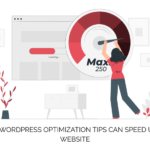It may be time to take your company to the cloud. The internet forever changed the way business is done, and it’s changing it again with cloud computing. The concept has been around for some time, but it’s seen massive growth in the past few years, especially for businesses.
Cloud computing is no longer a novelty. It’s become the norm. Changing your operations can be an intimidating prospect, but in today’s fast-moving world, you may fall behind if you don’t adapt to change. The time to migrate is now.
- Why Migrate to the Cloud?
You may have doubts about moving to the cloud. And yes it is a daunting task, but managed IT services can help to make the transition smoother. They can help you to plan and execute your move to the cloud, as well as provide support and advice along the way. In addition, managed IT support services can also help you to keep your costs down by monitoring usage and identifying areas where you can improve efficiency. As a result, you can save money and time, as well as reduce the stress of moving to the cloud. After all, it’s a significant undertaking. Migrating your business may be a complicated, involved process, but there are several benefits to cloud adoption.
First and foremost, cloud computing can save you money. Storing data and running applications on a virtual computer means you don’t have to shell out for top-of-the-line hardware. The “Big Three” cloud providers, Google, Microsoft and Amazon, all offer some amount of free service to users as well, which can help small businesses.
The cloud also offers improved reliability. It’s easier to recover a lost or damaged file on a virtual server than on a physical one. In addition to this, the cloud is more convenient, as you can access it from virtually anywhere should you need to work remotely.
- Don’t Lose Sight of Your Business
Cloud computing can offer a lot of advantages to your business, but you shouldn’t lose focus of that business while transitioning. It doesn’t do you any favors to stop your operations while you set up your future system. You should still be actively looking for new leads and maintaining customer support during the transition period.
Don’t put the burden of migrating on all of your employees. Designate a team to handle the majority of transition work so the rest of your workers can continue to operate as usual while you shift everything over.
You’ll likely have to slow down or pause some of your work during moments in the migration process. To minimize the effect this might have on your business, plan for it ahead of time. Know what you’re moving over, and when, so you can work around it.
- Determine Your End Goals
Before you begin taking any action in cloud adoption, you should think about your goals. What do you want to get out of the cloud? What specific requirements do you have? You can’t make an informed decision on a provider if you don’t know why exactly you’re looking for one.
There are a lot of different options out there. To get the best fit for your business, you need to determine what your business needs. You may only be looking for more convenient storage options. Alternatively, you may want to develop cloud-native applications for your business. Different services will fit different goals better.
It’ll be most helpful to write out your goals and not just think of them. Doing this will not only help you keep track of your goals, but will also let your provider understand how best to help you.
- Consider Various Approaches
Just as there’s more than one way to use the cloud, there are multiple ways to move over to it. While there are several cloud migration strategies, the three most common options are rehosting, replatforming and refactoring.
Rehosting, also called “lift and shift,” is perhaps the most straightforward approach to migration. It’s the process of moving your current data and applications to the cloud as-is. This method takes the least amount of time and effort, but it may be more costly in the long run.
Replatforming and refactoring both involve updating and modifying applications to make the most of the cloud’s advantages. These strategies, especially refactoring, take more time and may cost more initially, but offer increased functionality and lower operating costs.
The best approach depends on your resources and end goals. You may even consider a hybrid approach, which entails applying different methods to different applications. Look at what similar businesses have done and consult experts to determine which strategy will work best for you.
- Ensure Security
Many businesses move to the cloud for its enhanced safety, but it also comes with its share of security risks. While you shouldn’t let these concerns stop you from migrating, you should keep them in mind as you work with your cloud service provider. Most professionals agree that traditional security measures are insufficient in cloud environments, so make sure you look into cloud-native security.
As you plan your migration with your service provider, talk to them about their security options. On top of adopting cloud-native security software, you should train your staff on your changing safety needs. User errors account for a lot of data breaches, so it helps to have informed employees.
- Proceed With Caution
Once you’ve planned your migration thoroughly, you can go ahead and start the transition. But no matter how confident you are in your plan, you should keep a close eye on the process. If there are any bumps along the way, you want to handle them as quickly as possible.
Cloud computing can give you several benefits, but you should always start slowly to see what works best for you. The wide variety of cloud services and applications is an advantage, but it also means there are plenty of options that won’t work for you. If you see that something isn’t working out the way you would’ve liked, consider changing your approach.
It’s best not to move everything at once. Doing things one at a time will help keep your business open as you move and allow you to see if you need to make any adjustments. It’s better to take more time and be secure than to be quick and make mistakes.
- Set Up Support Systems
Once you’ve moved to the cloud, you may encounter some growing pains with your business. Changing the way you operate can be confusing or frustrating to your employees, so make sure you have help available for them.
If you designated specific employees to oversee the transition, you could ask them to serve as a cloud expert. Use their experience to help the rest of your staff. You may also consider hiring an outside cloud training service.
If you take your time both in planning and implementation, cloud migration is nothing to worry about. Follow these steps to move your business into the 21st century and embrace all that the cloud has to offer.








